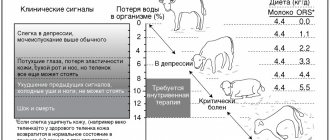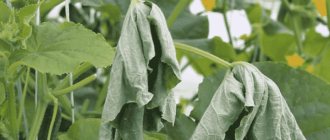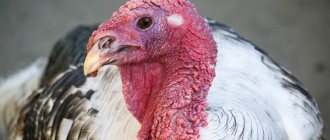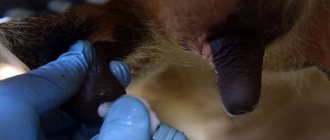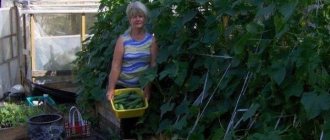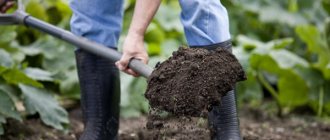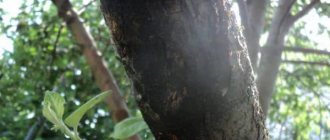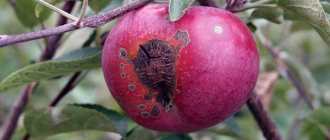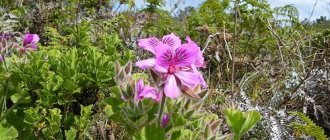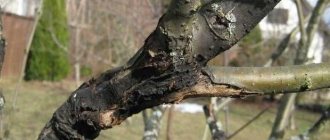Frost holes appear when severe frosts are replaced by a sharp thaw. They lead to cracks along the trunk and large branches. Cracking can be either small or quite extensive and deep. Frosts usually strike trees that have not been treated since the fall, without whitewashing. Therefore, most experienced gardeners strongly recommend not to be lazy and be sure to prepare the garden for the winter cold in late autumn.
What to do if, with the arrival of spring, you find such cracks and bark waste on the trunks. How to fix formed cracks, what to do closer to autumn.
Apple tree frostbite, how to treat in detail with photos
A crack that forms in winter requires urgent treatment. In frosty weather, treatment is not carried out so as not to harm the tree. Optimal conditions for starting work are +5 degrees, not lower. Otherwise, instead of scarring, there will be an increase in the size of the fault.
The apple tree trunk should be treated immediately after pruning the tree. This is the most suitable period for work. The tree is in a dormant state, the movement of sap has not yet begun.
- First of all, you need to clean off the peeled bark. It is cut off by completely scraping off the areas. Scraping should be carried out until the wood becomes light in color.
- Then the adjacent bark is cleaned with a stiff brush. The dead layer is removed as low as possible. In our case, there is no need to dig into the roots. But there are situations when a layer of soil is removed. This is an extremely necessary measure, since complete cleaning and disinfection will avoid wood rotting in the future.
- Only after these two procedures is the wood disinfected with fungicides. The treatment can be carried out with a five percent solution of copper sulfate. If the damage is deeper, it would be appropriate to use a ten percent solution.
- The next step is to putty with garden varnish. Its consistency should be paste-like.
- Such faults must be tied together with steel wire. Repeat the procedure until complete scarring every spring.
- After this, you can whitewash along with the main trunk. At the same time, it is recommended to add the same vitriol to the whitewash.
- Before whitewashing, the wounds can be wrapped with a bandage or covered with burlap. These two materials allow the trunk to breathe and dry quickly after rains.
- Mullein works well with clay at a concentration of 40/60. After this, the stem is wrapped with breathable material.
- Vitriol must be prepared immediately before use. After a day it loses its properties. To prepare a disinfectant mixture, dilute 5 g of granules in 300 g of water.
- The solution for treatment after disinfection is heated in a bathhouse. It should look like a paste, spread well, fill cracks and crevices.
When the heat outside stabilizes, day and night the temperature reaches plus 5 degrees, the burlap can be removed. Disinfect the wound again and then cover it with oil paint. It forms a crust through which no microorganisms can enter the wood. This prevents the putrefactive process.
Forming manual furrows is very effective for rapid healing
This procedure can be completed no earlier than May. If the bark has formed very thin by that time, the procedure is postponed until next year. The grooves are made with a not very sharp knife, so as not to cut through the young bark. The step width is 3 cm, the length is along the entire height of the wound.
Sorrel compresses for quickly tightening frostbites
It is quite effective to use oxal compresses in the treatment of apple trees. To do this, highly crushed sorrel is applied to the wound in a layer of up to 2 cm. Then, using a bandage, wrap the compress to the trunk.
After 2-3 days, the bandages are removed and replaced with new compresses. The acid released from sorrel works as a strong disinfectant; in addition, it accelerates the processes of wound regeneration. Under such a compress, infections do not accumulate and pests do not breed. The replacement is performed three times, after which the wounds are treated with varnish, whitewashed or a layer of paint is applied.
New branches on the apple tree in the area of frost holes
If a new branch emerges near the cracks after winter, there may be several at the same time. Don't remove them, they stimulate nutrition. They draw in the juices that pass under the resulting wound, thereby improving the nutrition of the wood in the area of the crack. This helps cracks heal faster. After the crack has healed, the branches can be removed, but not earlier than in the second year.
Grafting bridge
Vaccinations are effective for extensive frost zones. They are performed by building a bridge from branches. The effectiveness of this method has not been proven, but of course you can try.
The crack can be treated using the scion method. For a trunk measuring from 3 to 5 cm, up to four scions can be made. For less one, maximum two. They accelerate the movement of nutrients along the trunk, as they draw a lot of sap for growth. Thanks to the increased movement of juices, wound healing accelerates.
How to reduce the risk of frost cracks
Preventing a disease is always easier than treating it. To prevent frost damage, you need to:
- Choose the right varieties. When choosing seedlings, you need to buy tree varieties suitable for the region.
- Plant seedlings in windless, protected areas, where the risk of exposure to cold air is much lower.
- Proper application of fertilizers. Starting from mid-summer, it is necessary to minimize the application of nitrogen and increase phosphorus-potassium preparations.
- Timely harvesting, mulching and, in the absence of rain, abundant watering in the fall.
- Mechanical protection of trunks: whitewashing the trunk, tying with non-woven material, shading on the south side.
How to treat frost blight on cherries
You need to start working with damaged cherry trunks no earlier than the arrival of warm days. When the daytime temperature outside reaches plus five degrees. Control methods are similar to those used for all fruit trees. The only point you need to pay attention to is resin drips. They clog cracks and prevent proper cleaning and disinfection.
For treatment use:
- Putty of cracks;
- Wrapping the stem with breathable material;
- Grooving;
- Sorrel compresses;
- Filling wounds.
The trunk is thoroughly cleaned, followed by removal of the damaged bark.
Disinfection of the damage is carried out with a solution of vitriol. Its concentration depends on the severity of the fault. The deeper the crack goes, the stronger the concentration is applied. This is the basis that precedes all other activities.
After the trunk has dried from the disinfectant, putty is applied. The most optimal option var. It contains coniferous components that accelerate the regeneration of damaged tissues. In addition, wounds can be covered with sterile clay, a 60/40 mixture of clay and mullein. After this putty has completely dried, the areas are whitened or covered with oil paint.
If after winter the wound on a tree is large, after the measures taken it should be hidden under a breathable fabric. Wrap the cherry stem tightly. Taking into account the fact that such wrapping should stand until the next treatment or spring, it must be fixed with wire or twine.
Sorrel leaves are considered an accelerator for healing wounds on cherry stems . A paste is prepared from them, which must be tightly bandaged to the treated wound. This dressing stimulates wood regeneration and leads to the formation of young bark. Three procedures are enough. For greater confidence, gardeners use five dressings at intervals of 3-5 days. After the third or fifth bandage, you need to treat the wound with varnish, or any other of the five methods listed above.
Cutting furrows is one of the effective methods in the fight against winter cracks.
The resulting wound is quite deep, more than 5 cm, or has a crack leading into the trunk, branches, fillings are placed. They are made from cement. The only drawback of this material is its fragility. As the tree grows, the filling may fall out. In this case, the treatment is repeated, and the filling material is subsequently replaced.
If, after a crack has formed, resin begins to flow in the spring , the tree is completely depleted. His immunity weakens and he becomes infected with various diseases. Processing involves removing fruit resin. Then disinfection, you can immediately avoid it if you apply a sorrel dressing. Afterwards, the treated areas are lubricated with varnish or any of the methods described above.
Anti-aging activities have a positive effect on the growth of cherries. In addition, they lead to thickening of the cortex and rapid healing of wounds. There is no need to peel off the bark to make a cherry tree. After lightly cleaning it with a brush, cover it with a 1:1 clay/mullein mixture.
Causes of cracks
There are many versions explaining the reasons for the formation of frost holes. Only two of them seem to be the most reliable:
- Significant temperature difference between the center of the trunk and its peripheral sections. The outer layer of wood, under the influence of critically low temperatures, begins to compress more than the inner layer, and this provokes tissue rupture;
- When the trunk is heated on only one side, uneven deformation of the wood occurs in the tangential and radial directions. The critical stress that arises in this case leads to rupture of the fibers and, as a consequence, the occurrence of frost cracks.
The presence of liquid in the central part of the trunk facilitates this process.
Frost crack healed by wood
Sometimes, if the cambium layer remains intact, the tree can heal on its own. Then, with the onset of warmth, his wounds are healed with cambium, and if he does not receive repeated injuries for several years, he can recover.
But such a phenomenon is rather an exception to the rule. Most often, the trunk begins to destroy fungi that have penetrated through the wound. The rot spreads deeper, the frost hole turns into a hollow, and the tree dies if measures are not taken to treat it.
Nuances and questions from readers: actions if the bark peels off and...
Turns black
If the process of peeling and blackening of the bark is already occurring throughout the entire tree and the wounds look depressed, and the branches or trunk themselves look as if they were scorched by fire, then it is too late to save the apple tree. You can save the cuttings and try to re-graft them, but that’s not a fact. Because This is most likely black cancer of fruit trees, and it cannot be treated!
Rotting
The only thing that will help is to clear away all the rot to healthy cambium tissue and wood and coat it with fungicide preparations.
Afterwards you need to dry it and coat it thoroughly with varnish. If there is no varnish, it doesn’t matter; paint over it with natural or semi-synthetic drying oil.
There is a yellow lichen
The lichen is not dangerous. It indicates clean and very damp air; you don’t have to touch it, but the dead bark and fill the wound with varnish. After this, treat the entire tree with a fungicide.
There is a bark beetle
It is necessary to spray the eaten apple tree with a solution of Karbofos or a solution containing Aversectin S.
You also need to rake up the fallen leaves and dry twigs and burn them.
Gets wet
Such bark must be removed, stripping must be complete, until healthy wood is obtained.
And in order to protect the cambium from the spread of the disease, this damage around the edges is necessary:
- treat with hydrogen peroxide ,
- dry,
- carefully cover with red lead and real drying oil.
The apple tree is dying
If the apple tree is good and the trunk and roots are alive, and the wound is not too extensive, then it is necessary to build a “bridge” grafting, that is, a cutting grafting with twigs from the same tree. The vaccination itself must be done below the wound. The place must first be cleaned and covered with drying oil.
Prevention
In any case, it is better to prevent damage than to waste time and energy on eliminating the consequences. Preventative measures that reduce the likelihood of frost cracks include:
- planting fruit trees in parts of the garden where the influence of frosty air and high humidity on them will be the least;
- initial selection of the most cold-resistant varieties for garden plantings;
- autumn whitewashing of the trunk and skeletal branches with lime mortar;
- wrapping tree trunks with burlap, spruce branches or several layers of newspapers to protect against cold weather;
- a reasonable approach to fertilizing - excessive fertilizing (especially with nitrogenous fertilizers) can lead to the fact that the wood of an actively developing tree does not have time to strengthen for winter and will ultimately suffer from cold weather;
- planting young trees in such a way that the root collar is located above ground level - otherwise the normal development of the seedling will deteriorate, and in the future it will not be able to resist the negative effects of low temperatures.
Treatment of warm spots
The root collar, in stone fruit crops, is a vulnerable place, and if you deepen it even a little when planting, then in snow-rich winters and cool springs, which do not allow moisture to quickly evaporate, this can lead to overheating of this important place. Young stone fruit trees are especially often affected and if they are planted in a low location.
Sometimes the swelling is like a scratch on the hand, it heals by itself, and sometimes the lesion is large and quite noticeable. The first sign that the tree is in trouble is the abundance of root shoots, and if this is the root shoot of the rootstock, then it’s completely bad, apparently the tree decided to lay hands on itself and grow a savage instead of a cultivated variety.
Try to make a bridge-type graft, do not remove this growth, choose the thickest ones (eight of them), sharpen them with a budding knife like a teacher soaks a pencil lead, and stick them in the spring or summer (July) under the bark above the root collar and secure with something, at least with simple electrical tape, the main thing is that it’s stronger. It is quite possible that the tree can be saved, but it is better to move it later on to another horseshoe, re-oculating or re-copulating.
